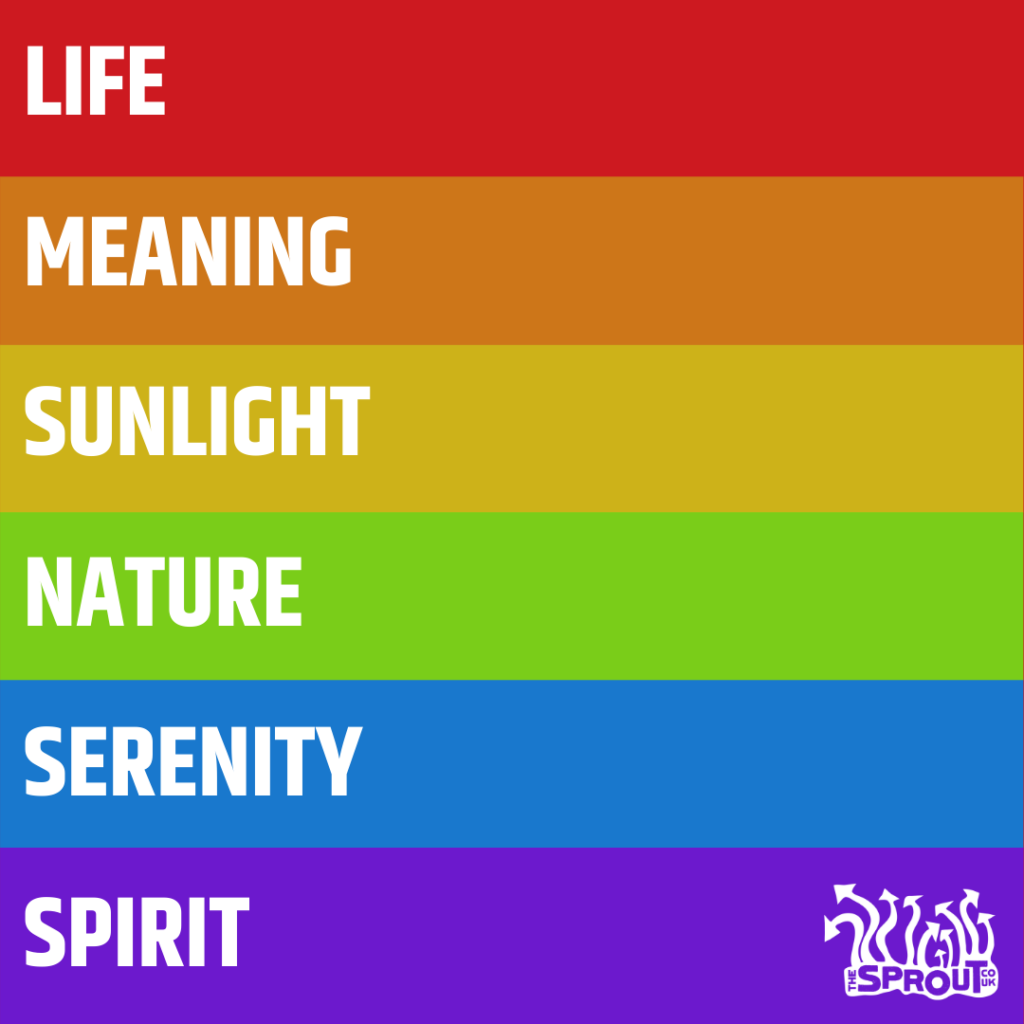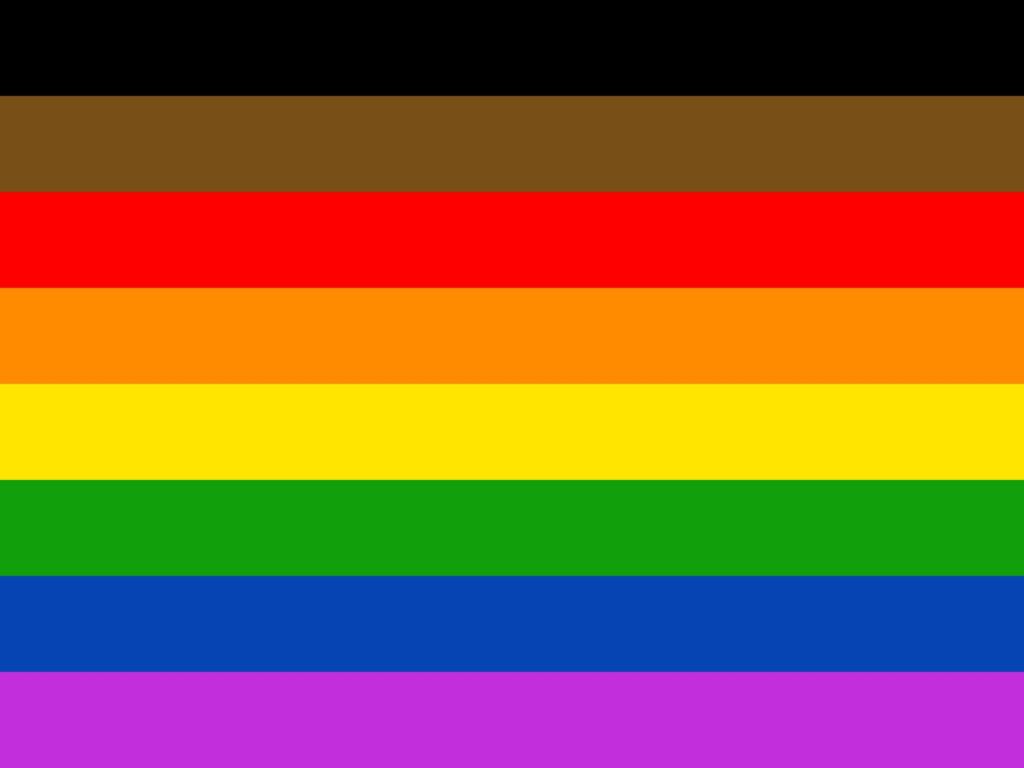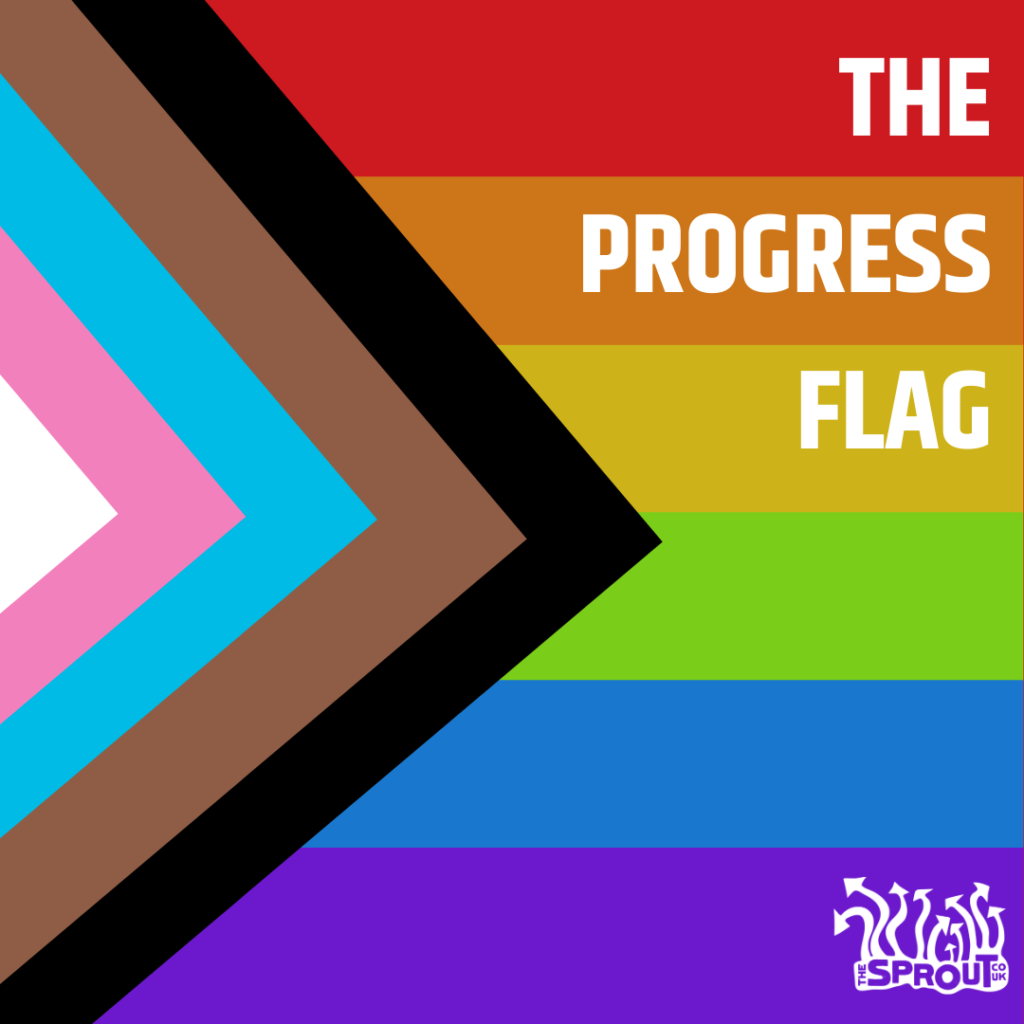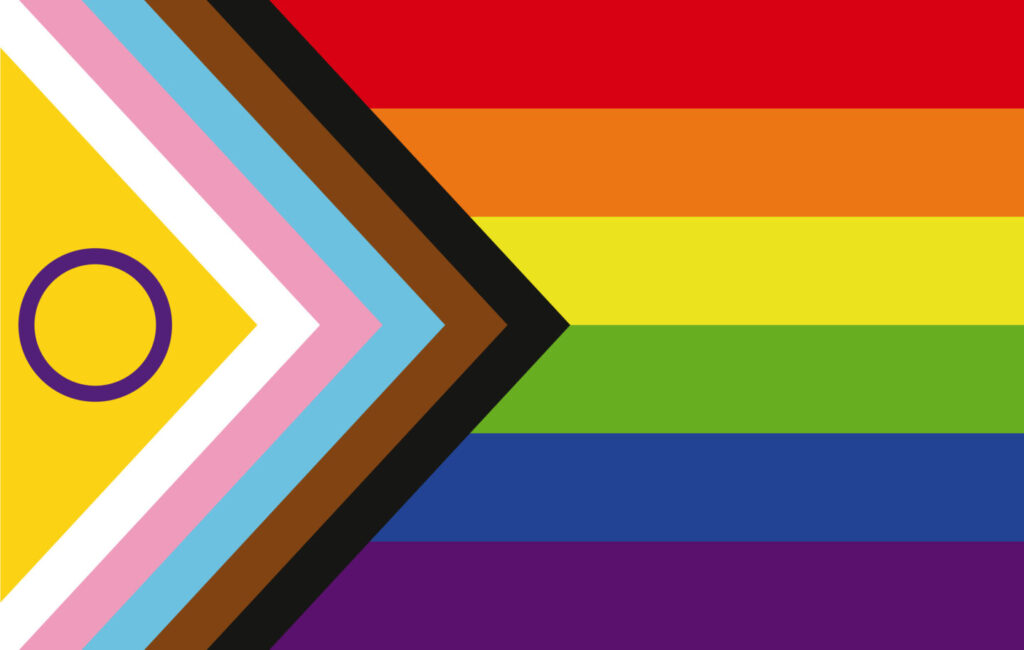The rainbow flag is a symbol of hope, diversity and inclusivity. Let’s take a look at some history of the Pride flag.
Where did the rainbow come from?
The LGBTQ+ flag is represented by the rainbow. The rainbow itself was thought to be inspired in the 1970s by Judy Garland singing ‘Over the Rainbow’ which originated in the movie Wizard of Oz. During the Stonewall Riots that happened a few days after Judy Garland’s death, the rainbow was adopted.
It’s also thought that the rainbow was inspired by colleges in the 1960s that were protesting for world peace and used a flag called Flag of the Races or Flag of the Human Race which was made up of five stripes – red, white, black, brown, and yellow. In 1978, the LGBTQ+ community landed on a six-colour version of the flag, which is the more common Pride flag.
The rainbow has since been used and each colour has its own meaning.

The Philadelphia Pride flag
In 2017, Amber Hikes, from the city of Philadelphia, introduced a version of the Pride flag with black and brown stripes.
This was included as recognition of the additional struggles that black and ethnic minority people face as part of the LGBTQ+ community, and represents support and solidarity for the oppression and discrimination they face.

The Progress flag
Further additions have been made to the common rainbow flag to showcase solidarity between sexuality, race and gender identity. These additions are called the Progress Flag which was created by graphic designer Daniel Quasar.
While retaining the common rainbow flag as a base, the progress flag variation adds a chevron along the left edge that features a brown, black, light blue, pink, and white. This puts marginalised communities of people of colour and transgender people at the forefront.
Similarly to the Philadelphia Pride flag, the black and brown colours are included to represent black and ethnic minority people. Light blue, pink, and white are the colours of the trans* flag, which are included to represent the trans* community.
The arrow points to the right to show movement forward but sits along the left edge to show the progress that still needs to be made.

The reason for adopting the new flag is not only to distinguish between the use of the rainbow as support of the NHS during the coronavirus pandemic but also to represent the changing times of our community and world.
The Intersex-Inclusive Progress Pride flag
In 2021, Valentino Vecchietti of Intersex Equality Rights UK adapted the Pride Progress flag design to incorporate the intersex flag, creating the Intersex-Inclusive Pride flag.
This flag features the addition of the yellow chevron with a purple circle, representative of the Intersex flag created by Morgan Carpenter in 2013. The circle signifies wholeness and the fight for intersex people to be who they want to be.

Which flag should you use?
Whilst new flags have been created to be more inclusive, some people within the LGBTQ+ community feel that as more gets added to the rainbow flag, the more divisive it becomes. Others feel that they are represented better on the more modern flags, as they are visibly included.
Just because new flags have been created and are being used, doesn’t mean that older versions of the flag aren’t important anymore. If you’d like to rep a pride flag, you can use whichever one you feel best represents you.
Related Information
Explore more about LGBTQ+ communities on TheSprout’s LGBT+ Information Page.
Whether you are LGBTQ+ or would like to support someone who is, you can find help and advice here.
Unsure what LGBTQ+ means? Have a look at TheSprout’s LGBT+ Glossary.
This blog was originally written in 2020 but has been updated in 2022 to reflect the new Pride flags.




